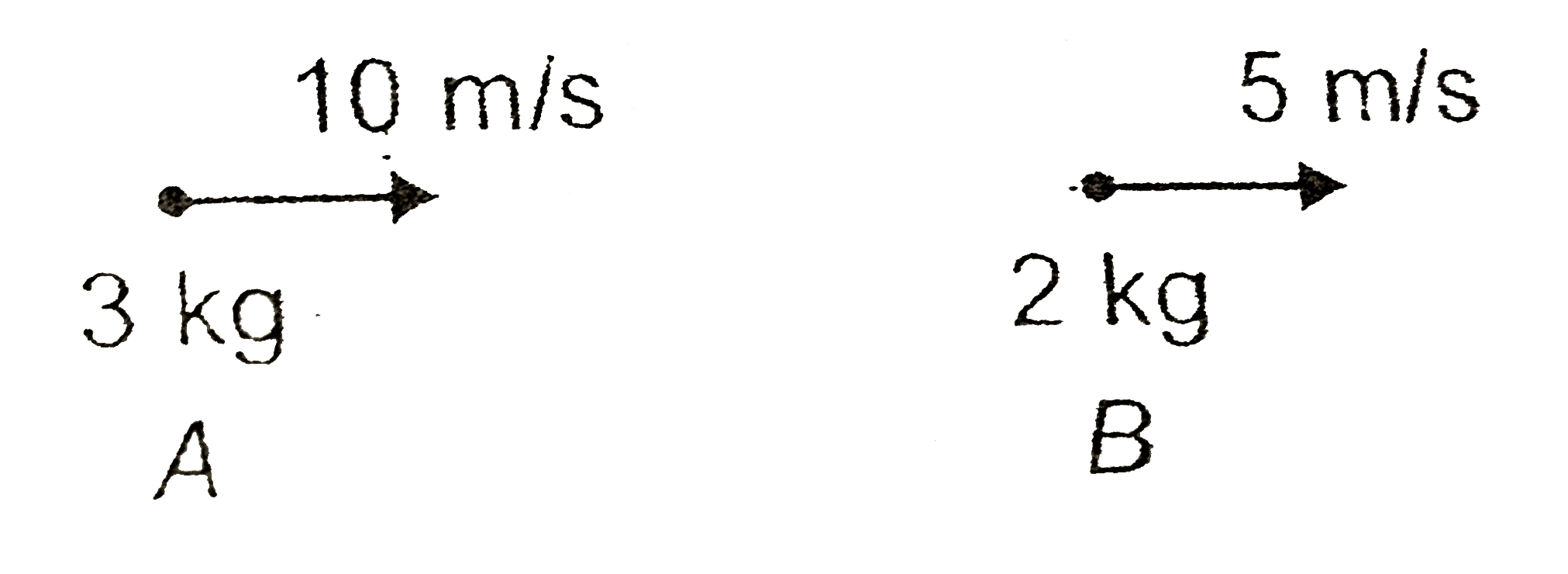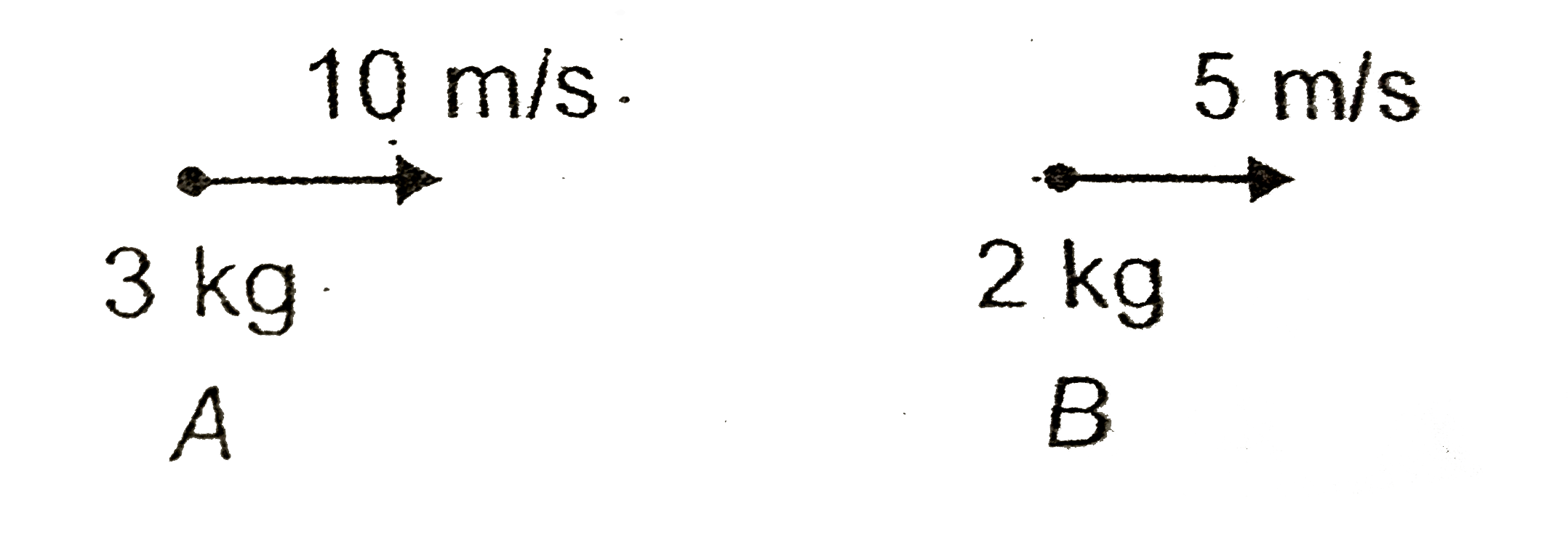A and B are two particles having the same mass m. A is moving along X-axis with a speed of 10ms−1 and B is at rest. After undergoing a perfectly elastic collision with B, particle A gets scattered through an angle of 30∘. What is th edirection of motion of B, and the speeds of A and B, after the collision?
Here, u=10m/s,θ=30∘,υ1=?υ2=?
As θ+ϕ=90∘,ϕ=90∘−θ=90∘−30∘=60∘
From u=υ1cosθ+υ2cosϕ
10=υ1cos30∘+υ2cos60∘=υ1√32+υ22orυ1√3+υ2=20 ...(i)
Again , from 0=υsinθ−υ2sinϕ
υ2sinϕ=υ1sinθ
υ2sin60∘=υ1sin30∘orυ2√32=υ12orυ1=√3υ2 ...(ii)
From (i), √3υ2√3+υ2=20,υ2=204=5ms−1
From (ii) υ1=√3υ2=√3×5=1.732×5=8.66m/s
Topper's Solved these Questions
- WORK, ENERGY AND POWERBOOK - PRADEEPCHAPTER - WORK, ENERGY AND POWEREXERCISE - higher order thinking skills
10 Videos
- WORK, ENERGY AND POWERBOOK - PRADEEPCHAPTER - WORK, ENERGY AND POWEREXERCISE - value Based Question
5 Videos
- WORK, ENERGY AND POWERBOOK - PRADEEPCHAPTER - WORK, ENERGY AND POWEREXERCISE - NCERT EXERCISES WITH SOLUTIONS
30 Videos
- THERMODYNAMICSBOOK - PRADEEPCHAPTER - THERMODYNAMICSEXERCISE - Assertion- Reason Type Questions
19 Videos
Similar Questions
Two particles A and B have the same mass m. A is moving along X-axis with a speed of 5ms−1 and B is at rest. After undergoing a perfectly elastic collision with B, particle A gets scat tered through an angle of 60∘. What is the direction of B, and the speeds of A and B, after the collision ?
View SolutionTwo particles each of mass m moving with equal speed 2m/s along the indicated direction in the figure undergo a perfectly inelastic collision.Velocity of combined system after collision is ?
View Solution
Knowledge Check
A ball moving with a speed of 10 m s−1 strikes an identical ball such that after the collision the direction of each ball makes an angle 45∘ with the original line of motion. Find the speeds of the two balls after the collision.
Av1=5√2 m/s,v2=10√2 m/sBv1=10√2 m/s,v2=10√2 m/sCv1=5√2 m/s,v2=5√2 m/sDv1=3√2 m/s,v2=10√2 m/sParticle A makes a perfectly elastic collision with another particle B at rest. They fly apart in opposite directions with equal speeds. The ratio of their masses mA/mB is
A12B13C14D1√3Particle A makes a perfectly elastic collision with anther particle B at rest. They fly apart in opposite direction with equal speeds. If the masses are mA&mB respectively, then
A2mA=mBB3mA=mBC4mA=mBD√3mA=mB
A and B are two identical balls. A moving with a speed of 6m/s, along the positive X-axis, undergoes a collision with B initially at rest. After collision, each ball moves along directions making angles of ±30∘ with the X-axis. What are the speeds of A and B after the collision ? I s this collision perfectly eleastic ?
View SolutionTwo particles A and B of mass 3kg and 2kg moving with speed 10m/s and 5m/s as shown in figure.

Find the maximum momentum that particle B can have after collision with B.
View SolutionA ball moving with a speed of 9m/s strikes an identical ball at rest, such that after the collision, the direction of each ball makes an angle of 30∘ with the original line of motion. Find the speeds of the two balls after collision.
View SolutionTwo particles A and B of mass 3kg and 2kg moving with speed 10m/s and 5m/s as shown in figure.

Find the maximum momentum that particles A can have after collision with B.
View SolutionA ball moving with a speed of 9ms−1 strikes an identical ball such that after the collision the direction of each ball makes and angle 30∘ with the original line of motion. Find the speeds of the two balls after the collision.
View Solution